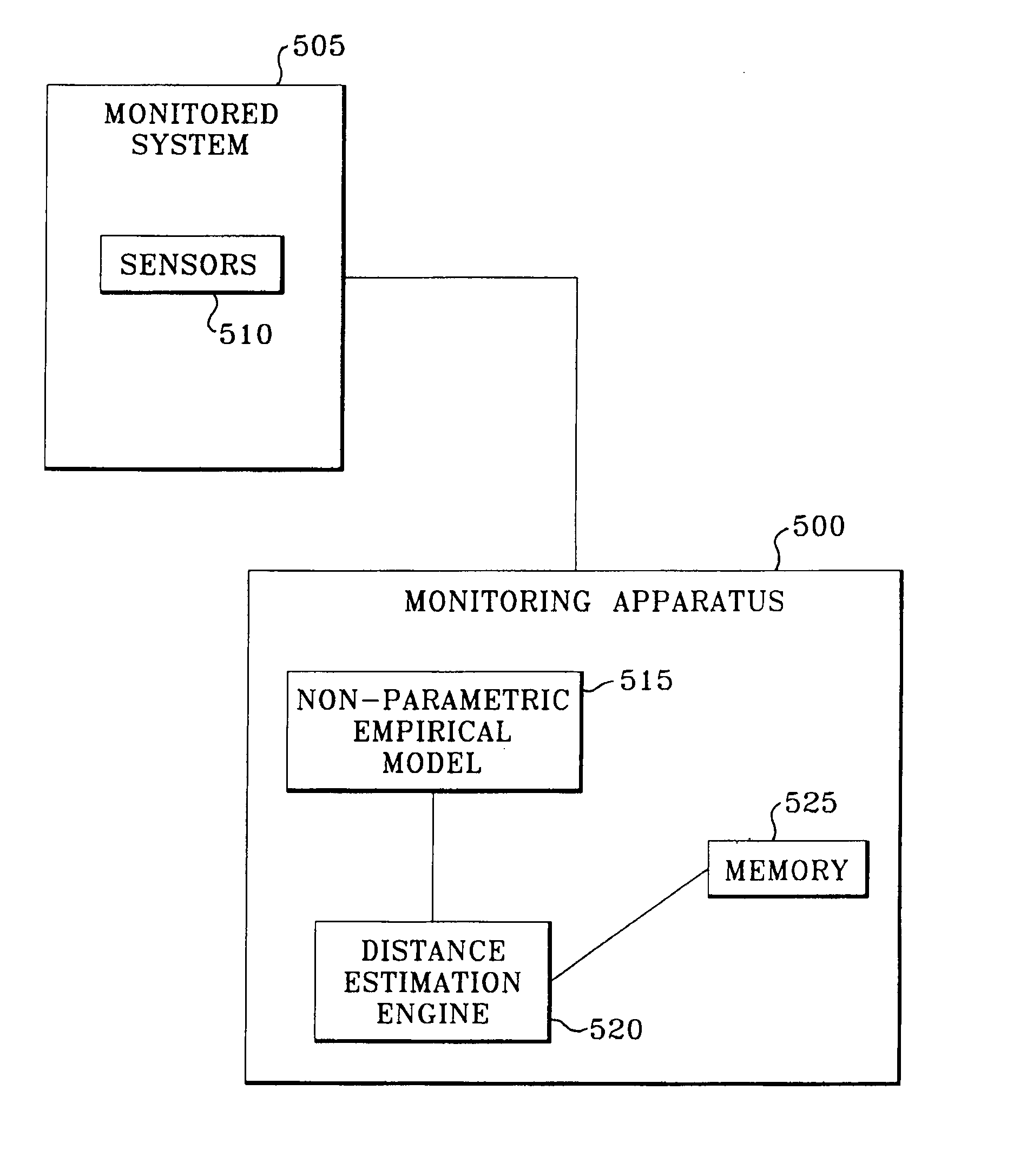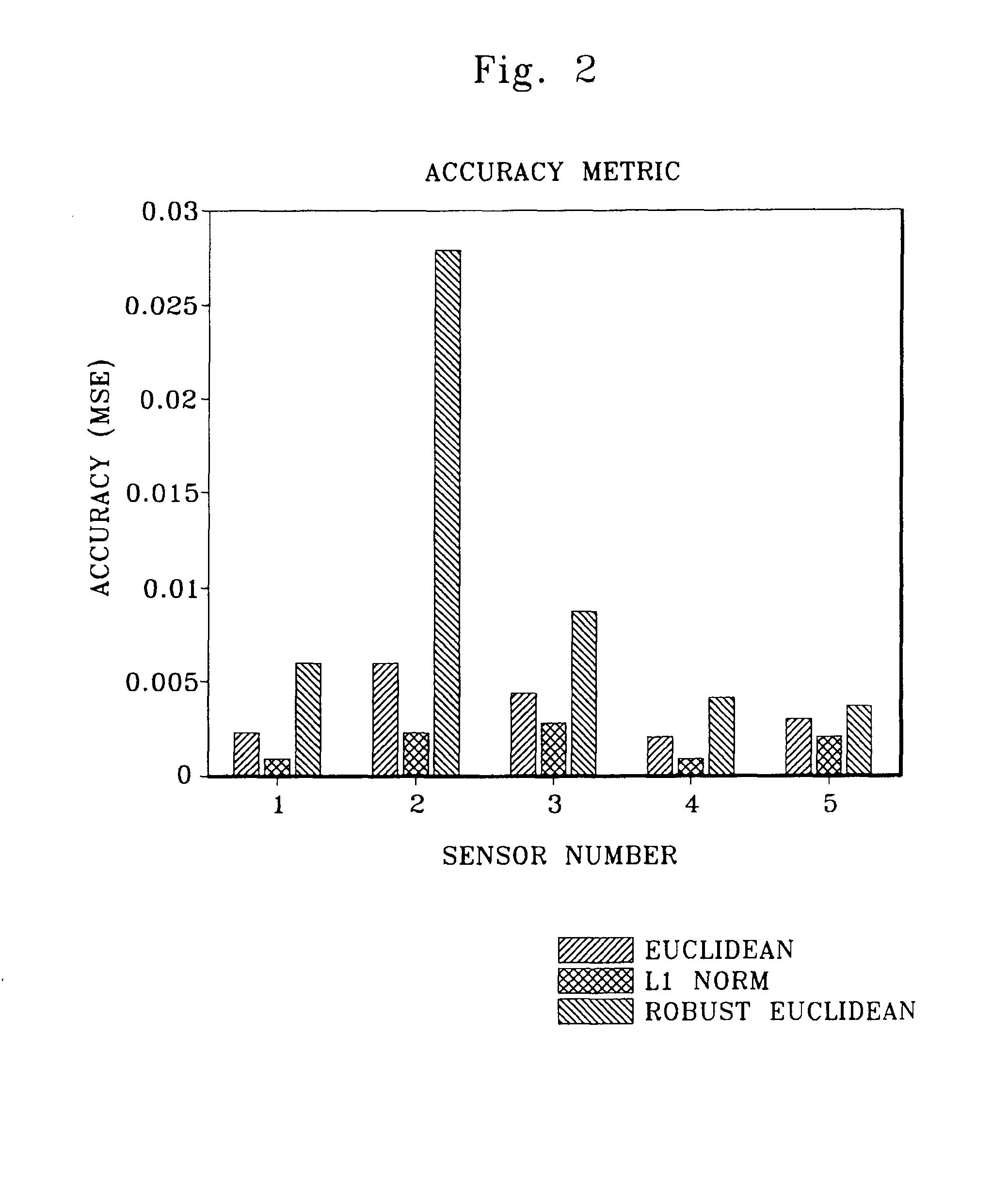Robust distance measures for on-line monitoring
a distance measurement and distance measurement technology, applied in the direction of testing/monitoring control systems, instruments, greenhouse gas reduction, etc., can solve problems such as the inability to respond to outlier inputs, and achieve the effect of improving kernel-based model performance, more robust distance metrics, and performance advantages
- Summary
- Abstract
- Description
- Claims
- Application Information
AI Technical Summary
Benefits of technology
Problems solved by technology
Method used
Image
Examples
example
[0037]Data was collected from an operating nuclear power plant steam system and used to compare and evaluate the robust distance metrics. The model is used to monitor steam system sensor calibration at an operating plant and contains 5 plant sensors, primarily from one loop, which include 2 turbine pressure sensors and 3 steam pressure sensors. The quoted sensor units are as follows: 1) turbine pressure in pounds per square inch atmospheric (PSIA) and 2) steam pressure in pounds per square inch gauge (PSIG). The training data for each of the sensor types is shown in FIG. 1. The data presented in FIG. 1 was selected from data collected every two minutes over a two-month period. Overall, the training and test data spans approximately 2 weeks of data observing every 5th sample or every 10 seconds.
[0038]The training data was chosen to be 1,600 observations from steady state plant operation. The test data were chosen to be a successive set of 400 observations sampled from steady state pl...
PUM
 Login to View More
Login to View More Abstract
Description
Claims
Application Information
 Login to View More
Login to View More - R&D
- Intellectual Property
- Life Sciences
- Materials
- Tech Scout
- Unparalleled Data Quality
- Higher Quality Content
- 60% Fewer Hallucinations
Browse by: Latest US Patents, China's latest patents, Technical Efficacy Thesaurus, Application Domain, Technology Topic, Popular Technical Reports.
© 2025 PatSnap. All rights reserved.Legal|Privacy policy|Modern Slavery Act Transparency Statement|Sitemap|About US| Contact US: help@patsnap.com



